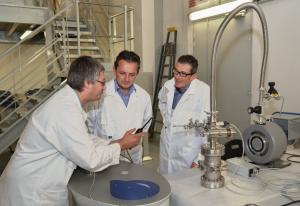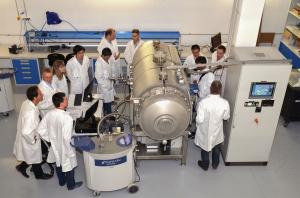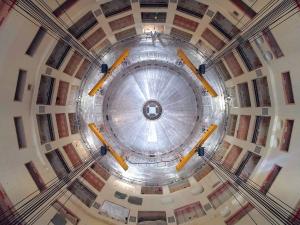"We will also likely use a technique called glow discharge cleaning, which involves bombarding the walls with cold plasma. Beyond glow discharge cleaning, we can also use a higher energy tokamak plasma for cleaning. Normally when you run, you try to confine particles so they stay away from the walls. But if you want to clean the wall, you can actually run plasma along the surface."
"Another technique is to create radiofrequency-excited discharges to clean the walls," says Pearce. "These discharges desorb impurities that can then be pumped out."
From experimental reactors to commercial fusion
One can never be too obsessive when it comes to keeping a tokamak clean. Two incidents at one of ITER's predecessors highlight how a seemingly small mistake can have a huge impact. The first case involved a small piece of cable left inside a vacuum chamber, which prevented the reactor from operating for several weeks. In the second case, a piece of tape was left on a wall in the vacuum vessel. It took months to identify the issue and to get the reactor operating again at full performance.
"When you find the piece of tape, the problem is obvious," says Worth. "But when you have a vacuum problem, especially one that is associated with contamination, you have various pieces of evidence from different sources—for example, a pump doesn't work or you see a bit of titanium where it shouldn't be. It's like a detective story. You know you will find the answer eventually. Sometimes you get it right away; other times it might take months to find."
"One of the most sensitive measurements of contamination is the plasma itself," says Worth. "Different diagnostic instruments look at the radiation from the plasma for example. But we also have our own vacuum instrumentation where we can look at what we call the residual gas, gas that is present in the vacuum vessel after pumping and conditioning. We can do this in between pulses to determine the cleanliness of the vacuum."
Ultimately, the goal of the vacuum team is to learn what it takes to achieve the required level of cleanliness and to drive cleaning processes towards industrial application. Much has already been gained from the experiences at JET and other fusion reactors. But because ITER is a different machine (it is pumped differently and it lends itself to different cleaning techniques), there is still more to learn.
"What we learn now can positively impact DEMO and commercial reactors," says Pearce. "Sustainable fusion will come faster if we learn and apply the lessons from the past and present, including simple things like cleanliness."




